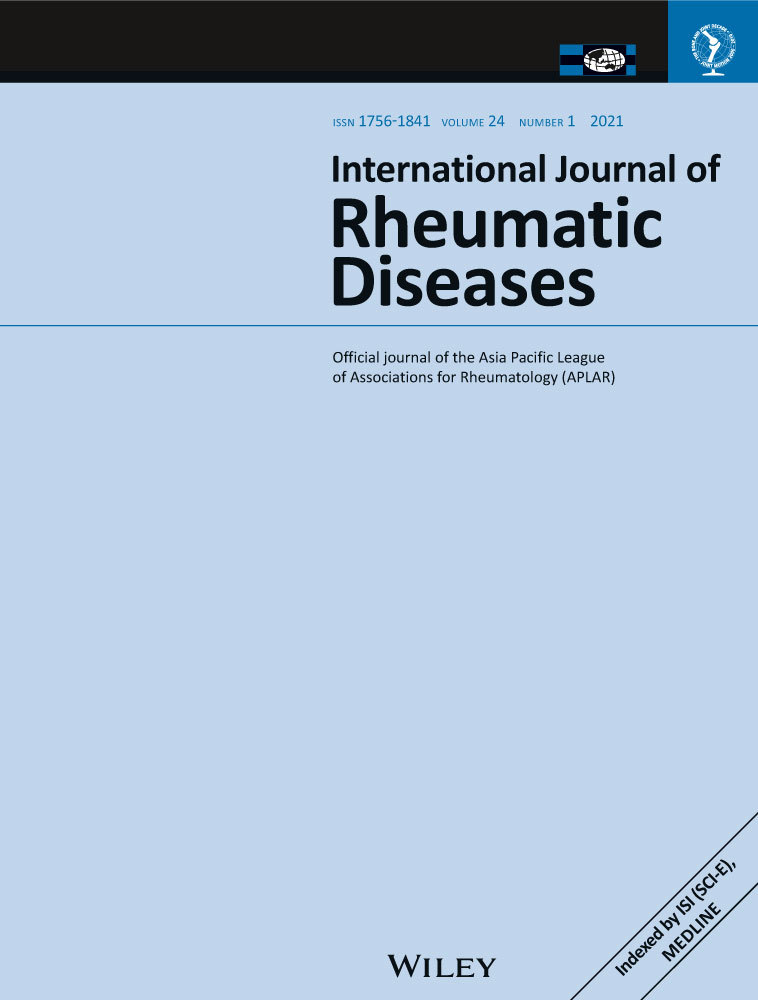Joint damage in rheumatoid arthritis: Lessons learned from an extended 36-joint ultrasonography and 28-joint Disease Activity Score assessments
Abstract
Aim
To study joint damage severity in rheumatoid arthritis (RA) patients classified using ultrasound power Doppler (PD) and gray-scale (GS) joint inflammation outcomes and the 28-joint Disease Activity Score (DAS28).
Method
Ultrasound erosion scores were compared between (a) patients in group 1 (PD positive and GS ≥ median score), group 2 (PD negative and GS ≥ median score) and group 3 (PD positive and GS < median score) vs group 4 (PD negative and GS < median score) and (b) patients with high, moderate and low DAS28 scores vs those in DAS28 remission. Comparative analyses were performed using the 2-sample Student's t test.
Results
There were 1080 joints and 1800 joint recesses from 36 joints scanned in 30 RA adult patients (mean DAS28, 3.58; mean disease duration, 70.3 months) in this cross-sectional study. The mean and 95% CI ultrasound erosion scores were significantly higher (P = .026) for groups 1 (9.75, 6.69-12.81) vs 4 (3.4, 1.11-5.69) with a difference (95% CI) of 6.35 (0.78-11.83), but not significantly different (P values all > .05) for (a) groups 2 and 3 vs 4 and (b) patients with high, moderate and low DAS28 scores vs those in DAS28 remission.
Conclusion
Severity of ultrasound-detected bone erosions was significantly greater when both positive PD and a greater degree of GS joint inflammation were present in RA. This association was not observed when either component was absent. Single time point ultrasound joint inflammation assessment – and not DAS28 – is reflective of joint damage severity in RA patients.
CONFLICT OF INTEREST
The authors declare they have no conflicts of interest.




